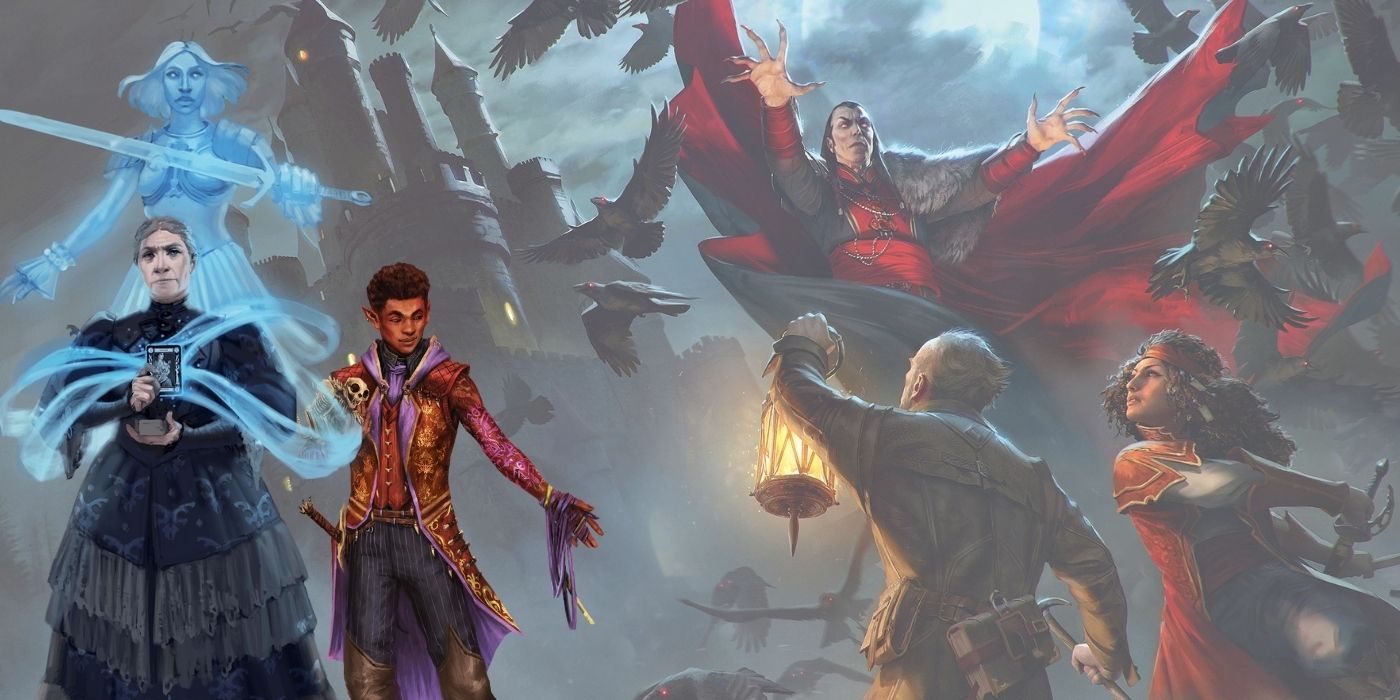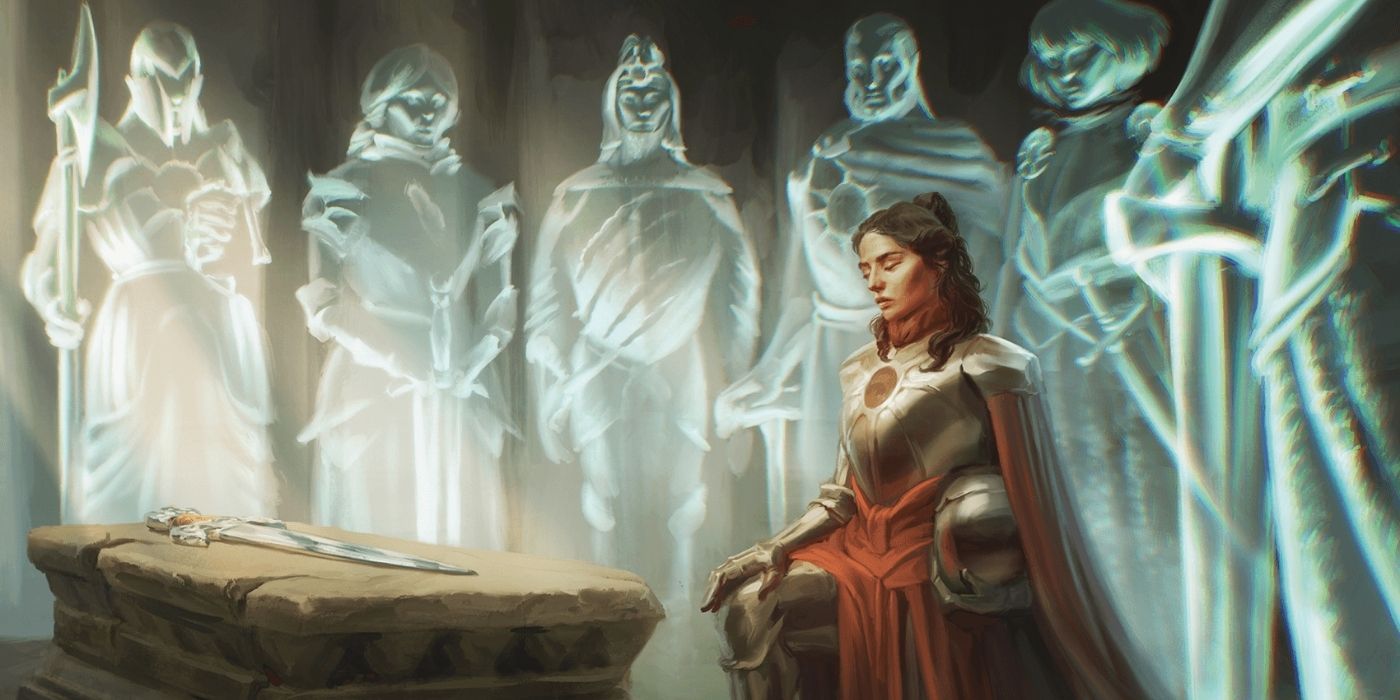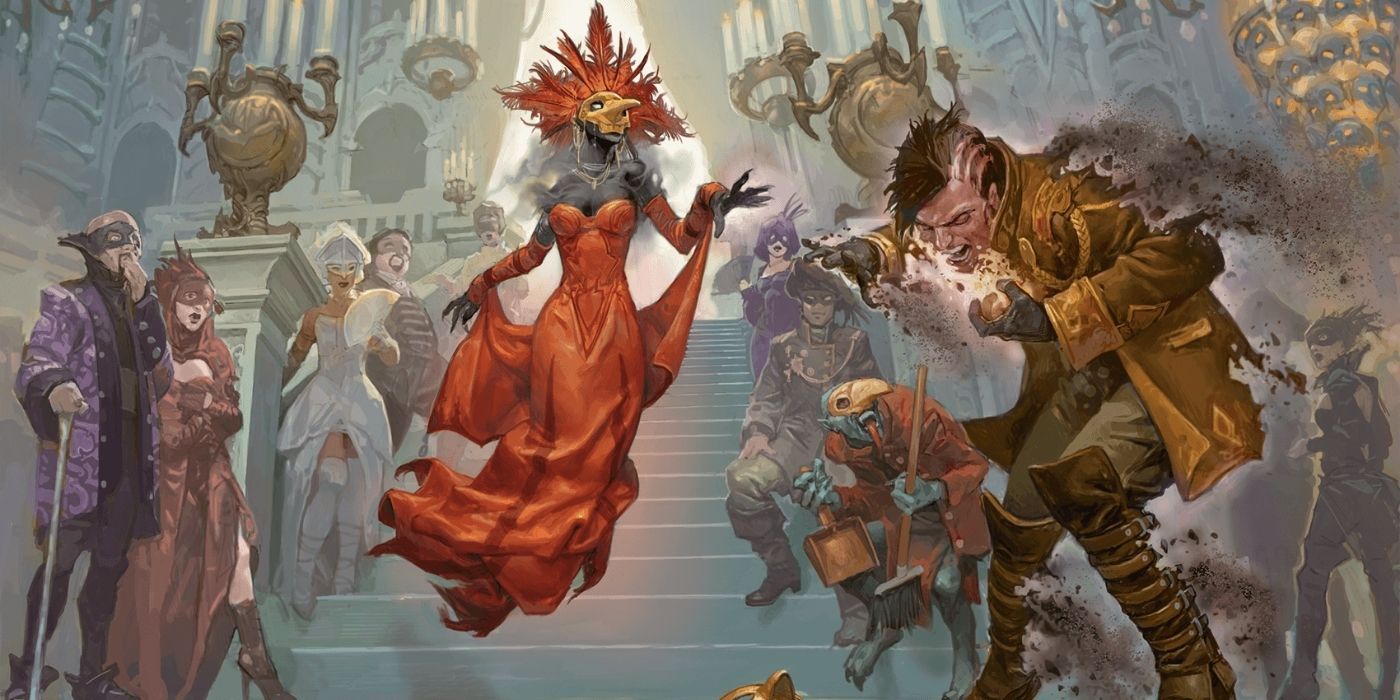
Whenever a new Dungeons & Dragons supplement releases, players immediately want to know what new subclasses are available. This is especially true for Van Richten's Guide to Ravenloft. The newest D&D book explores horror themes within the pocket dimension of Ravenloft, a place where Darklords rule over their Domains of Dread and supernatural mists swirl across the haunted lands.
Among the many new bits of content in Van Richten's, there are two new subclasses perfect for any horror campaign: the College of Spirits for Bards and the Undead Patron for Warlocks. Each of these subclasses add terrifying new abilities that are sure to make for an unforgettably chilling campaign. While both of these classes are designed with a horror setting in mind, they do not need to necessarily be used exclusively in a Ravenloft campaign. It is also important to note that, while Bards choose their subclass when they reach third level, Warlocks must select their their pact at character creation.

The Bardic College of Spirits adds a dark dimension to what is usually a fairly upbeat class. This Bard tells powerful stories that conjure the spirits of the mythic heroes, historical champions or ghastly creatures described within them. All stories have power, and these stories -- and the spirits they conjure -- give powers to the Bard. Additionally, the College of Spirits gives the character a spiritual focus to enhance their spellcasting. The character could hold a skull aloft while reciting a tale of times past or shuffle a Tarokka deck in their quick hands as they chant an epic verse, summoning spirits to do their bidding. However, the spirits might not always be compliant, and can even possess the character.
Starting at third level, the College of Spirits grants the Bard the Guidance spell without counting against the number of cantrips they know. They also gain the aforementioned spiritual focus and the Tales from Beyond ability, summoning a spirit who speaks through them. The spirit uses the character's Bardic Inspiration as a bonus action to tell one of a number of possible spirit tales, each of which has a different effect on any target within 30 feet. Some examples include the Tale of the Renowned Duelist (which dramatically increases the damage of a target's melee attack) and the Tale of the Runaway (which allows the target to teleport up to 30 feet away).
At sixth level, Bards gain access to Spirit Session, a ritual where they can learn a divination or necromancy spell from any class spell list. At 14th level, Bards can choose to tell two separate spirit tales at the same time.

Since Warlocks get their magic by making a pact with a powerful entity like a devil, archfey or elder god, their Faustian origin has always been rooted in tragic horror motifs. Now, a Warlock can forge their pact with a powerful undead entity, such as the demilich Acererak or the pharaoh Darklord Ankhtepot.
Warlocks of the Undead gain access to an expanded spell list at first level, as well a Form of Dread, where they physically transform to embody an aspect of their patron for one minute. This grants temporary hit points totaling 1d10 plus their Warlock level, immunity from being frightened and a chance to frighten one target per turn after successfully attacking them. At sixth level, the character no longer needs to eat or even breathe, and they deal additional necrotic damage while in their Form of Dread.
Upon reaching level 10, they become resistant to necrotic damage (and immune while in the Form of Dread). If they are reduced to zero hit points, they can release a blast of necrotic energy, gaining one hit point and dealing necrotic damage equal to 2d10 plus their Warlock level to any targets they choose within 30 feet. These powers transform the Warlock into a force of living death, becoming nigh-impossible to kill while sending their enemies to an early grave.
0 Comments